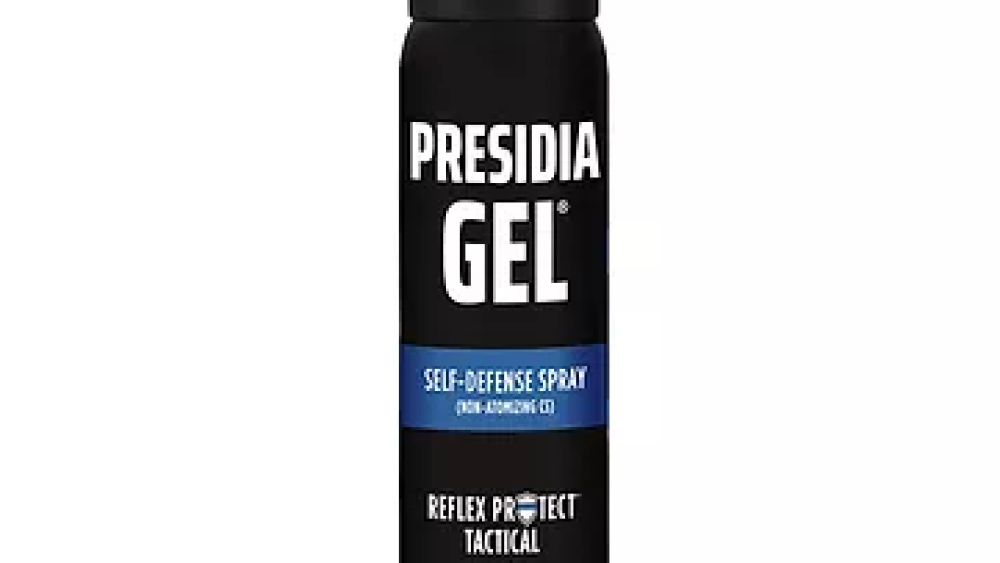By Police1 BrandFocus Staff
Sometimes it seems like there’s a new headline almost every day about police use of force. Public reactions range from extreme calls to “defund the police” to more practical recommendations to increase training and encourage de-escalation. The latter approach offers the potential for increased safety for officers and suspects alike.
“The last thing we want to do is encourage our officers to have to go hands-on,” said Matt Schaefer, CEO of Reflex Protect Tactical and a longtime law enforcement trainer. “Anybody that’s been in law enforcement for more than a day knows if my officer has to go hands-on, I’ve now increased the risk of my officer getting hurt, my suspect getting hurt and force getting escalated.”
But while there’s a lot of opportunity to do force differently and improve everybody’s safety, he says, there’s a huge gap in the tools available to officers between command presence and laying hands on a suspect.
Here are three things today’s officers and command staff need to know about force:
1. USE OF FORCE HAS CHANGED
Agencies are changing the way they approach use of force, says Schaefer. When the first TASER electronically controlled device was released in the 1990s, it was embraced as the middle ground in less-lethal force between hands and batons or firearms. But many agencies now rank ECDs and pepper balls higher on the use of force, equal to baton strikes, he says.
Many agencies still use OC or pepper spray, but OC is viewed by some as punitive, because it keeps burning well after compliance is achieved, making it problematic with the public.
“The argument is: I’ve sprayed you, I now have cuffs on you, the fight’s over and you’re cooperative, but you’re still climbing in heat. There’s nothing I can do to bring you back down,” said Schaefer. “So all those groups that are arguing that pepper spray is punitive and it shouldn’t be used – that’s hard to justify when we’ve got somebody that’s cooperative but they’re still climbing in heat. I can’t fix that.”
Also, most officers simply don’t like to use OC spray or only use it as a last resort because it gets everywhere – including all over them and the inside of their cruiser – so they, too, suffer its effects. This cross contamination of everyone and everything in the vicinity also makes OC spray unsafe for indoor use, as it can easily get into HVAC systems, further limiting its appeal.
That leaves a significant void between the simple presence of the officer and going hands-on, says Schaefer.
2. KNOW WHAT TOOLS ARE AVAILABLE
Since the invention of pepper spray in the 1960s, there have been no new spray products – until now. Presidia Gel, a fast-acting, sticky CS spray, can fill that gap between verbal commands and hands-on or higher. Even better, it offers a fast-acting antidote.
“We’ve seen Presidia Gel having a real niche there because it doesn’t cross contaminate,” said Schaefer. “We’ve also seen a lot of agencies using it sooner in their use-of-force policy, because it has no long-lasting effects and it can be reversed.”
Indeed, for the first time, officers can decontaminate a suspect on scene within minutes using the antidote Reflex Remove. Presidia Gel takes effect instantly, unlike OC (which takes a minute or so to incapacitate someone) and also creates far less risk of secondary injury.
“We can reverse it so much faster,” said Schaefer. “Literally in a few minutes, they’re back to normal.”
Another advantage is that it’s used just like any other spray system, so it’s a familiar form factor that works with an officer’s existing muscle memory and fits into the pouches on a duty belt or vest.
3. MOST AGENCIES DON’T DO ENOUGH TRAINING WITH SPRAY TOOLS
That muscle memory is vital to successful use, and Schaefer cautions against not doing enough training with your spray tools.
“It’s important to practice at least annually and to do so in uniform and full gear to develop critical muscle memory,” he said. “Pepper spray spreads and literally makes training a pain for everyone, so many agencies don’t do it often enough or don’t require officers to do so in uniform.”
Part of that “pain” is the long decon times – sometimes half a day – needed to make sure officers have recovered enough to safely go back to work or home. Presidia Gel, on the other hand, requires far less time thanks to quick and easy decon.
“We can cut training time in half because we can expose an entire class and get everybody back to normal in a few minutes and then get on with the rest of the day,” said Schaefer.
Another issue is physical realism. Schaefer says many agencies allow officers to attend spray training in sweatpants to make decon faster and easier, but he recommends making it as real as possible by training in full uniform and for different weather conditions, whether that’s short sleeves for summer or a parka and gloves for winter. That way, they develop the right muscle memory for the field.
“Make it realistic as possible and get the officers actually used to using an inert unit – or a live unit, for that matter – and training on getting it off their pouch, coordinating it with their verbal commands and their de-escalation, and actually incorporating the whole use-of-force package,” he said. “We don’t see enough of that when it comes to law enforcement training.”
Ultimately, he says, when officers are able to use lesser force options like Presidia Gel sooner, it improves safety for everyone and ends the encounter quicker. Reflex Protect offers departments a free test and evaluation kit, or T&E kit, with one Presidia Gel and one Reflex Remove so you can try it for yourself.
For more info, to request a test kit or sign up for free a training course, visit Reflex Protect Tactical.
Read Next: Apples to oranges: Comparing less-lethal spray options


